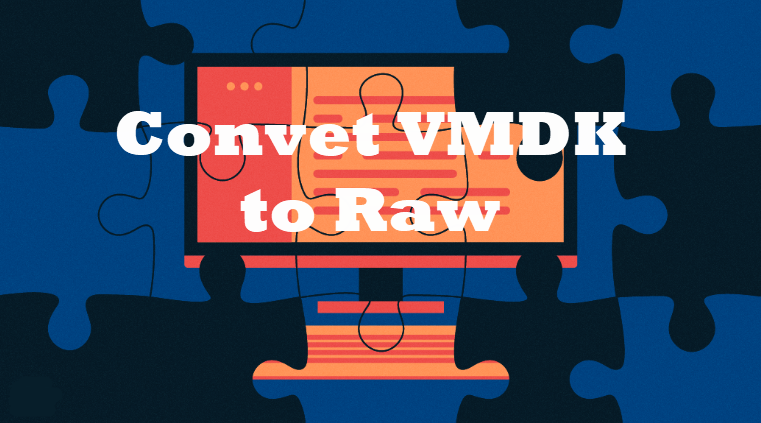Converting VMDK files to raw format improves compatibility, portability and also gives you access to the underlying disk structure. You can do this using qumu-img, VMware Workstation and VirtualBox.

VMware uses virtual machine disk (VMDK) files to store data. In some cases, you need to Convert VMDK to raw disk image format, a format that can be used in other environments or in specific use cases. In the following article, you will be provided with the details of convert VMDK to raw image.

VMDK is a VMware virtual disk file format that contains virtual machine data (operating system, application, and user data).
A raw disk image does not have any additional metadata, headers, or file system structure, and it can be used in different environments, for example, physical hardware, other virtualization platforms, or cloud infrastructures.
In this next section, you will be provided with three ways to convert VMDK to raw.
Before converting VMDK to Raw, you need to make sure you have the following requirements:
qumu-img is a tool from the QEMU project that supports conversion between various disk image formats, including VMDK and raw.
🔶Steps for Linux
Use the following command to convert the VMDK file to a raw image.
🎈Tips: When using the command you should notice: -f vmdk: Specify the input file format (VMDK). -O raw: Specify the output file format (raw). source.vmdk: Path to the VMDK file to be converted. destination.raw: output raw file.
🔶Steps for Windows
Open a command prompt or PowerShell and run the qumu-img command for Windows:
This is done by attaching the VMDK file to a virtual machine and then using the vmware-vdiskmanager utility to convert the virtual disk.
Locate vmware-vdiskmanager in the installation directory. then open a terminal (Linux) or command prompt (Windows) and use the following command to convert the VMDK to a raw disk.
🎈Tips: When using the command please notice: -r: Tells the tool to read the source VMDK file. -t 0: Specifies that the disk is to be converted to raw format. Remember to replace source .vmdk and destination .raw with the appropriate paths.
If you have Oracle VirtualBox, you can use the VBoxManage tool to do the conversion.
Convert VMDK using the VboxManage utility:
Before making any changes to the VMDK files, for the safety of your important data, please choose to use backup software to back up your data. You can choose to use AOMEI Cyber Backup, which is a professional and powerful backup software designed to provide you with various solutions for VMware virtual machine backup.
Centralized Backup: You can only use 3 steps to create a backup task for multiple VMs without installing an agent on each of them. Backup to all Locations: It supports backup VMware virtual machines to external hard drives, local storage, NAS drives, network share, etc. Schedule Backup: It automatically backs up virtual machines regularly to continuously protect VMware workloads. Role Assignment: Allows one administrator to create sub-accounts with limited privileges, effectively reducing administrative costs and labor errors.
How to backup VMware ESXi virtual machines
Step 1. Log into the AOMEI Cyber Backup, navigate to Source Device > VMware > + Add VMware Device to enter Device Information and User Information, and click Confirm.
Step 2. Navigate to Backup Task > + Create New Task and select VMware ESXi Backup as the Backup Type. Then set the Task Name, Device, Target, Archive, and Schedule as needed.
Step 3. Click Start Backup and select Add the schedule and start backup now, or Add the schedule only.
Converting a VMDK file to raw disk makes the file compatible with any environment. You can use qumu-img, VMware Workstation, or VirtualBox and follow the steps provided in this article, the whole conversion process is relatively simple. Be sure to back up your data before performing the conversion to prevent data loss.